The Four Noble Truths
The Dalai Lama
Review By Dan Geddes
The Dalai Lama’s The Four Noble Truths was originally given as a lecture in London in 1996. The Dalai Lama introduces the essential tenets of Buddhism to a Western audience.
For the Dalai Lama the two basic principles of Buddhism are the interdependent nature of reality, and the principle of non-violence. The interdependence of things is a tenet from which many other Buddhist constructs (including the Four Noble Truths) can be derived.
The Dalai Lama introduces each of the Four Noble Truths, drawing on examples both from Buddhist scripture and ordinary experience to support the accuracy of Buddhist philosphy. Buddhism is presented as an antidote to the surfeit of illusory pleasure in the West, among other ills.
The Four Noble Truths (discussed more fully below) are the Truth of Suffering, the Truth of the Origin of Suffering, the Truth of Cessation, and Truth of the Path.
In his Introduction, the Dalai Lama stresses the importance of tolerance for all religions, even though he admits that in his talk he will claim that Buddhism is the best way for various reasons. He has met practitioners from other religions that have developed loving hearts. Moreover, the variety of schools within Buddhism suggest that different people need different approaches; no religion or school of thought will satisfy all the earth’s people.
The Dalai Lama also states the two basic principles of Buddhism: the interdependent nature of reality, and the principle of non-violence. Becoming a Buddhist entails taking refuge in the three jewels: the Buddha [not the historic personage per se, but his example to achieving buddhahood?], the Dharma (the Buddha’s teaching), and the Sangha (the community of practitioners). Buddhahood is a state of freedom from negativity and afflictive emotions (11). The Dharma should show us the path to buddhahood, first by leading to cessation of afflictive emotions, and then to cessation itself (cessation of all suffering).
Understanding begins with perceiving the interdependent nature of reality: “all conditioned things and events in the universe come into being only as a result of the interaction of various causes and conditions” (12). Thus, things cannot arise from nothing, nor do they arise from a Designer or Creator (refuting the classic Argument from Design in Western Philosophy). Also, we should understand that wholes are always comprised of parts, and are dependent upon them. And thirdly, nothing in reality has an independent, autonomous existence; things certainly exist (“Buddhism is not nihilistic” (14)), but they are contigent, dependent upon other factors and interactions for their existence (this is “the empty nature of reality” (17)).
Understanding of causal dependence prepares for the teaching of karma, the causal principle governing human behavior. Understanding of the interdependence of all things, even of the interaction between perception and reality, prepares us to understand “the origin of suffering,” the emotional experiences that lead to confusion.
The Dalai Lama also distinguishes between absolute truth (the empty nature of the world) and conventional or relative truth. But conventional reality still reveals its own interdependence, and so suggests to us the nature of absolute truth.
Chapter 1, Introducing the Four Noble Truths, asserts the prime importance of the Four Noble Truths because they address humanity’s fundamental desire[!] to achieve happiness and avoid suffering. The Dalai Lama defines happiness as the complete freedom of suffering, a definition which will go far in presenting the Four Noble Truths as the right path for humanity. A paradox here is that cessation is seen as being unconditioned, and yet it is only achievable through an individual’s efforts to walk down the Buddhist path (36).
The Dalai Lama stresses that we need to recognize that we are in a state of duhkha (suffering, frustration, unsatisfactoriness) before we fully develop the desire to be free of suffering and to be happy. The traditional order in which the Four Noble Truths are stated is used to correspond to the order that an individual is likely to apprehend them, much as a sick person must first recognize his illness before going on to understand its origins and then the proper remedy. The Dalai Lama stresses that Buddhism’s emphasis on suffering is not morbid or pessimistic because the cessation of suffering is definitely attainable. The Buddha taught that there are twelve nidanas, twelve links in the cycle of existence. Many people are lost in ignorance, so their whole causal chain of links leads to more suffering; those who learn to forego volitional actions lose the suffering consciousness and enter the more positive nidanas.
The Dalai Lama discusses the first noble truth in Chapter 2, The Truth of Suffering. In Buddhist cosmology there are three realms, perhaps best introduced as levels of consciousness: the Desire Realm (one is attached to pleasing sensations), the Form Realm (where one eschews the Desire Realm, but is still attached to pleasing inward emotions), and the Formless Realm (where one achieves true equanimity, and seeks not physical or inner sensations) (43). These realms of consciousness also correspond to cosmological realms; the Formless Realm, for example, is immune to the constant arising and dissolution characteristic of the Desire Realm. Also, the universe dissolves at the end of the great cycles, variously by fire, water, and wind, corresponding to levels within the Form Realm (47).
The Dalai Lama describes three types of suffering. The suffering of suffering occurs during the pains of birth, sickness, ageing, and death. Our supposed rebirths ensure that we stay within the cycles of the suffering of suffering. The suffering of change concerns experiences commonly described as pleasurable. The Dalai Lama argues that these apparent pleasures are only relative pleasures, an apparent form of relief. Surely these pleasures are not genuine pleasures because, after a point, further indulgence in the causes of pleasure does not bring more pleasure but less (overeating is a classic example here). [Yet I find this a weak argument. Pointing out that while eating is often a pleasure, eating to excess often makes us miserable, should only show us the importance of eating appropriately. Doing anything to excesss, by definition, will be bring undesirable consequences (else it is not to excess); but this should not be an argument against experiencing pleasures in their proper proportion.] “If you look carefully, everything beautiful and good, everything that we consider desirable, brings us suffering in the end” (53). [Again, the Dalai Lama is offering an extreme solution to the problem of impermanence, the most vexing aspect of which is the foreknowledge of our own finite existences.]
The third type of suffering, the suffering of conditioning, arises from our fundamental ignorance. Because we are usually so ignorant, we are conditioned to suffer within the chain of samsara. The impermanence of thingscan be caused both by the thing itself containing the seed of its own destruction, or being destroyed by some other thing.
The chain of suffering continues so relentlessly because ignorance is our default state. And ignorance brings volitional acts, which themselves lead to more suffering. Such a view of volition suggests that Buddhists are not proponents of anything like Free Will, despite, paradoxically, the intense resolve and effort (“will power”) it takes to practice Dharma. But since volitional acts spring from ignorance and illusion, some Buddhists may well have argued that the idea of volition itself is illusory.
Our consciousness, too, is usually confused, but through meditation we can learn to live in the present moment, to achieve a higher realization of the interdependence of all things.
In Chapter 3, The Truth of the Origin of Suffering, the Dalai Lama relates the two kinds of ignorance (the root of suffering): ignorance of the laws of causality (including karma), and ignorance of the ultimate nature of reality. Karma is distinct from other laws of causality in that it governs intentional actions. Karmic actions may produce suffering, joy, or equanimity, corresponding to three Realms of consciousness. The karmic effect produced will have various degrees of intensity depending on the strength of the thought and deed behind the action. Practioners of the Dharma learn to identify and avoid negative thoughts and actions. Note however that the wish (volition) to seek happiness and overcome suffering is itself not a karmic product. As ignorant as we are, some of us have apparently learned what to wish for (the end of covetousness).
Although karma governs volitional acts, other laws of causality operate on the physical world: the Principle of Nature (things exist; causality obtains), the Principle of Efficacy (things produce results according to their nature), the Principle of Dependence (there is a natural dependence between things and events, causes and effects), and the Principle of Valid Proof (“given this, that should be the case”) (85). But karma teaches us the negative results of our thoughts and actions, and so is a more instructive type of causality.
Incidentally, the belief in the existence of beginingless former lives rests on the premise that consciousness is a continuum (“sheer luminosity” (88)), and consciousness cannot arise from non-consciousness. Nor can non-consciousness arise from consciousness; so our consciousnesses traverse from body to body in a change of samsara.
In Chapter 4, The Truth of Cessation, the Dalai Lama asserts that it is possible to achieve moksha (liberation) and nirodha (cessation). The Dalai Lama argues that since we can understand the truth of emptiness through analysis and reasoning, we work toward understanding truth of cessation without relying exclusively on scriptural authority. We are empty in the sense that have no soul (anatman), though there are several different interpretations of anatman within the Buddhist tradition. Although there are different ramifications to the various conceptions of anatman, the Dalai Lama believes that none of the schools negate the reality of the conventional world. The belief in emptiness does not invalidate the principles of karma and causality. The Dalai Lama advocates the “Middle Way,” a conception of emptiness as dependently originated, one that avoids the extremes of absolutism (things-in-themselves possess absolute existence) and nihilism (nothing exists) (101). Through correct meditations on emptiness the meaning of the negation of atman is understood, and liberation is achieved through the elimination of grasping. The Dalai Lama argues that by keeping in mind the lack of intrinsic reality in all things, we can more dispel our afflictive emotions by underscoring their lack of validity.
The belief that “our potential for knowledge is intrinsic to our consciousness” (112), while afflictive emotions are not, suggests that we can not only reduce the levels of afflictive emotions in our lives, but also totally eliminate them.
In Chapter 5, The Truth of the Path, the Dalai Lama affirms the truth of the Path, variously defined.[1] Intuitive realization of emptiness is the beginning of the road toward cessation. The Mahayana Path stresses developing universal compassion, which is only possible after understanding the suffering of yourself and others. The Vajrayana Path uses visualization techniques to help you conceive emptiness.
Regardless of the various emphases of the schools, the Dalai Lama advises those interested in practicing Buddhism to meditate on the Four Noble Truths, to have great determination (it might take many lifetimes to develop one’s understanding and compassion), and to avoid impatience in one’s practice.
#
Assessing the “validity of a religion” is always a dubious proposition. Religious tenets often concern themselves with the “supersensory” reality of the world or the mysteries of human consciousness, and so do not yield well to scientific analysis. Religious beliefs can rarely be disproved on scientific or logical grounds (the same could be said for many philosophies); religious speakers are squawking vendors in the marketplace of ideas, just like philosophers, poets, and all the rest. The plausibility and usefulness of beliefs will often determine our reaction to it—though analysis may well render some tenets implausible.
The Dalai Lama does not tell us here the order in which the Buddha “discovered” the Four Noble Truths, but I suspect that the Buddha began with the premise that humanity is sick and in need of spiritual medicine: Buddhism. Gautama himself was a prince allowed to experience a surfeit of sensory delight, and at some point realized the diminishing returns of sensory pleasures. If he, Gautama, was suffering, surely the lower castes and the untouchables were suffering as well. Thus, Man is sick, unsatisfied; his wants can never be filled. Perhaps we shouldn’t want so much. Buddhism teaches us how to see our wants in a “truer” light.
The Dalai Lama uses an analogy between the humanity’s need for the Four Noble Truths and sick man’s need for a correct diagnosis and treatment. Doesn’t such an analogy reveal a pessimistic view of human nature? That our (natural) desires lead us to confusion and dissatisfaction? Perhaps fulfilling more of our desires is the answer, rather than cauterizing our desires. If I am hungry, perhaps I should eat, rather than seek to frame the desire in a new context. And isn’t it typical of religion to define humanity as such as problematic, so that it needs a remedy (religion) to solve its problems? By defining happiness as the complete freedom of suffering, and asserting that all people want to be happy, and defining Buddhism as an effective way of reducing or eliminating suffering, the Dalai Lama argues that Buddhism is the best road to happiness.
Like other religions, Buddhism does more than attempt to solve the problem of human happiness; it seeks to answer other perplexing philosophical questions, such as the problem of impermanence. Buddhism stresses the impermanence of things in everyday reality, and derives emptiness from this. Plato also detected impermanence, but from that derived his theory of the (very permanent ) Forms. Why should we select one over the other? One can see Buddhism as an elaborate solution to the problem of impermance: Leave most of the reality in the vulgar world of incessant Becoming (samsara), but salve the human desire for immortality by stressing that some part of us (but not our soul!) is recycled through samsara. But positing annihilation as the best relase from Becoming is an original Buddhist approach. Perhaps the whole idea of rebirth/reincarnation came about so as to give all the suffering fools infinite chances to follow the Dharma and achieve bodhichitta?
Numerous modern writers have pointed out the strong similarity between the Buddhist theory of the empty nature of reality and quantum physicists’ model of reality consisting mostly of empty space, electrons circling in a wide orbit around tiny, heavy nucleii. Although this lends support to the Buddhist conception of emptiness, the “discoveries” of modern physics should lend little comfort to confirmed Buddhists, who should be prepared to accept this model of emptiness irregardless of the current condition of scientific knowledge.
#
The primary importance of the Dalai Lama’s Four Noble Truths is the clarity with which he has summarized Buddhism and its relevance for the modern world. Even persons who do not subscribe to Buddhism can learn from The Four Noble Truths, and can co-opt some Buddhist ideas into their own personal philosophies. Buddhism emerges as a very this-worldly, practical approach to life, rather than its somewhat mystical reputation.
30 September 1999
[1] Apparently in Tibetan Buddhism the Noble Eightfold Path is subsumed under the Meditation Path, one of five paths in the Tibetan system (166).
See also: Book reviews and criticism
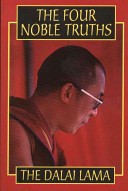





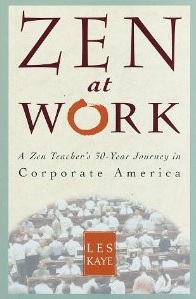
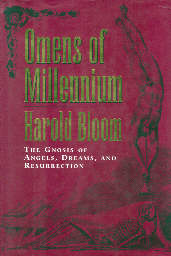
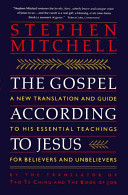
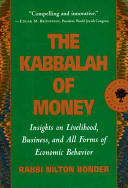
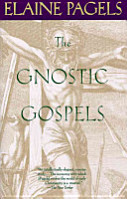
Be First to Comment